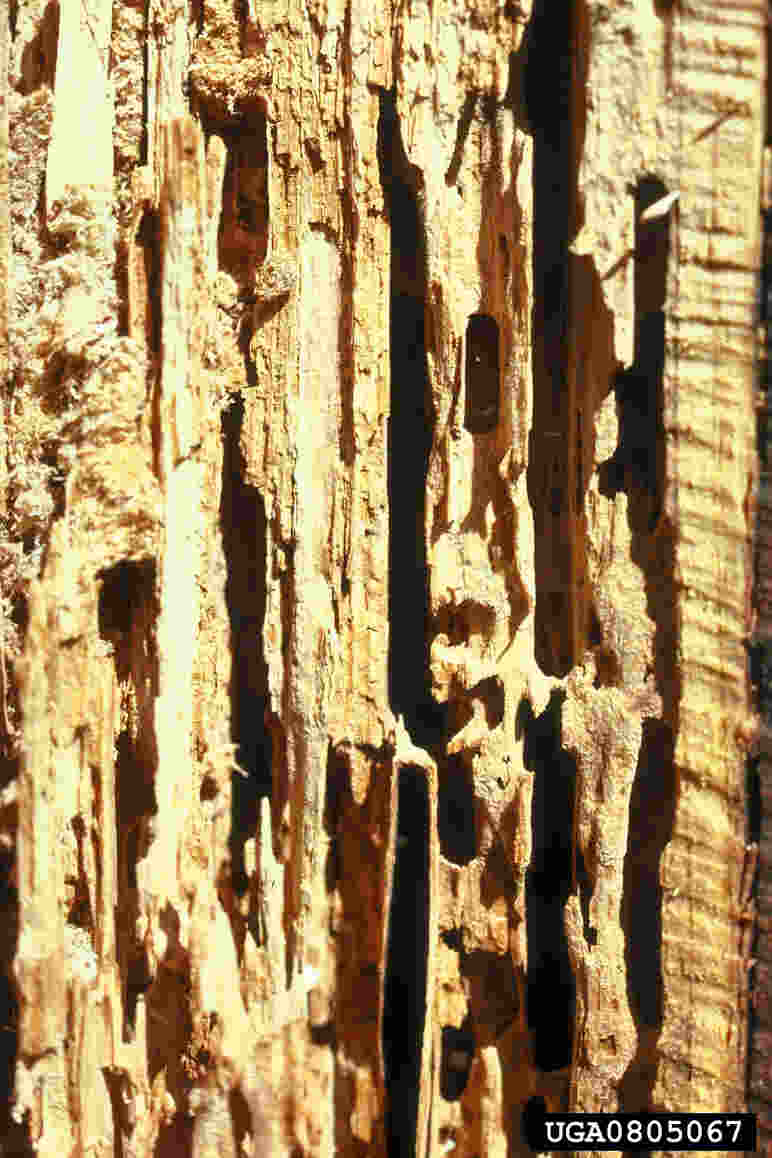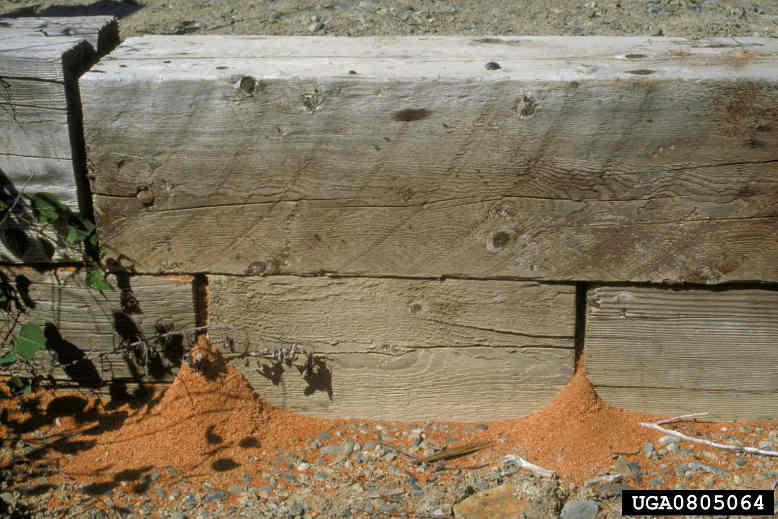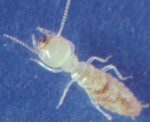 Carpenter ants are very large ants and range in size from one-quarter inch for a worker ant to up to three-quarters inch for a queen. They can be black, red, or a mix of both colors. In South Jersey, we usually encounter black Carpenter Ants.
Carpenter ants are very large ants and range in size from one-quarter inch for a worker ant to up to three-quarters inch for a queen. They can be black, red, or a mix of both colors. In South Jersey, we usually encounter black Carpenter Ants.
(Photo courtesy of Joseph Berger, Bugwood.org)
They can’t sting, but can inflict painful bites with their powerful jaws and spray formic acid into the wound causing a burning sensation.
Carpenter Ants normally build their nests outdoors in various wood sources – tree holes, tree roots, stumps, firewood or landscaping. They perform a very important purpose in nature – helping to break down and decompose wood.
Carpenter ants need a constant water source to survive.
They will enter homes through wet, damaged wood looking for nesting sites or moisture. They usually come into buildings through cracks around doors, windows, or through holes for wires. They will also crawl along overhead wires, shrubs, or tree limbs that touch the building far above the ground.
Carpenter ants get their name because they excavate wood in order to build their nests.
They don’t actually “eat” the wood like Termites do, but they “chew” smooth tunnels (called galleries) into structural wood or rigid foam board insulation to expand their nests.
 (Photo courtesy of R. Werner, USDA Forest Service, Bugwood.org)
(Photo courtesy of R. Werner, USDA Forest Service, Bugwood.org)
Even though these ants first invade wet, decayed

wood, they may soon begin building paths through dry, undamaged wood. The paths they create become smooth, hollow cavities in the wood and the frass they leave behind is coarse sawdust.
(Photo courtesy of Edward H. Holsten, USDA Forest Service, Bugwood.org)
If left uncontrolled for a long period of time, they may cause significant damage to structural wood – not unlike Termites.
 Carpenter ants differ from Termites by having dark-colored bodies, narrow waists, bent antennae, and if present – hind wings are shorter than front wings. They are very common and are often seen out in the open.
Carpenter ants differ from Termites by having dark-colored bodies, narrow waists, bent antennae, and if present – hind wings are shorter than front wings. They are very common and are often seen out in the open.
(Photo courtesy of David Caeppert, Michigan State University, Bugwood.org)
 Termites are light colored, have no waist constriction, straight antennae and if present – wings are of equal length. They avoid light and are rarely seen outside of their colony.
Termites are light colored, have no waist constriction, straight antennae and if present – wings are of equal length. They avoid light and are rarely seen outside of their colony.
(Photo courtesy of National Pest Management Association, Inc.)
Carpenter Ants are nocturnal – foraging for food and moisture at night. It is very common to enter a room early in the morning and see ants scurrying for cover when the lights are turned on.
Common places to see them are cabinets, sinks, dishwashers, roll-up towels, bathtubs, sink and toilet areas, or other places where moisture is found.
Their food preferences switch seasonally – honeydew (what is excreted from plant-sucking insects like aphids), sweets, nectar, fruit juices, and proteins – like dead and living insects, meats.
What you can do:
- Eliminate all sources of moisture or standing water.
- Repair leaks and increase ventilation to damp areas such as attics or crawl spaces.
- Replace decayed or damaged wood and correct the problems that cause decay such as clogged gutters or leaky pipes.
- Trim branches that overhang the home and trim shrubs away from the house.
- Remove old tree stumps and roots, decaying fence posts and landscape timbers.
- Reduce mulch around building perimeters to a depth of 2 to 3 inches, and 10-15 inches away to discourage nesting.
- Reduce honeydew-producing pests – such as aphids and scales.
- Make sure that there are no cracks or little openings around the bottom of your house. Seal off potential entry points, especially around utility lines.
- Store firewood and building materials as far away from your home as possible and at least 5 inches off the ground to allow air circulation.
- In winter, when using firewood – make sure you are not bringing pests into your home with the wood.
- In the home, remove potential food sources and store food items in sealed containers.
Call AB-Con today and have your Carpenter Ant problem solved correctly from the start!
